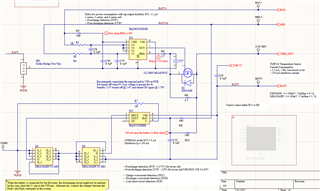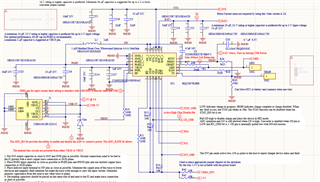Other Parts Discussed in Thread: BQ25887
The BQ29705 battery protection circuit and BQ25887RGER battery charger are both functioning properly under normal 500mA current. However, when the battery is fully discharged, the discharge MOSFET fails to turn on as it should when the charger cable is connected via the charger detection circuit. It remains off, and I am still unable to resolve the conflict between the two components.
To address this issue, I added a 0.1uF capacitor between the battery ground and USB_BUS, which generates a negative voltage on the battery ground with respect to the charger ground. This solution works most of the time, but there are still occasional instances where the discharge MOSFET fails to enable again when the battery is fully dead.
Please note that R9 and R31 are DNP. The battery pack is a 2-cell, 7.4V pack, and the BQ29705 is being powered from the middle pin of the battery pack




